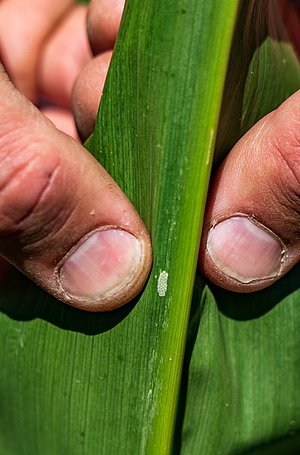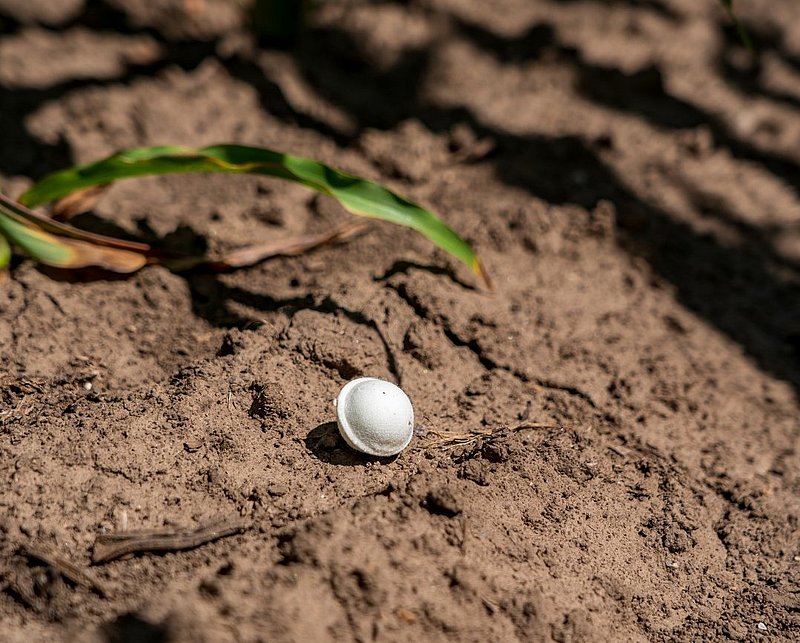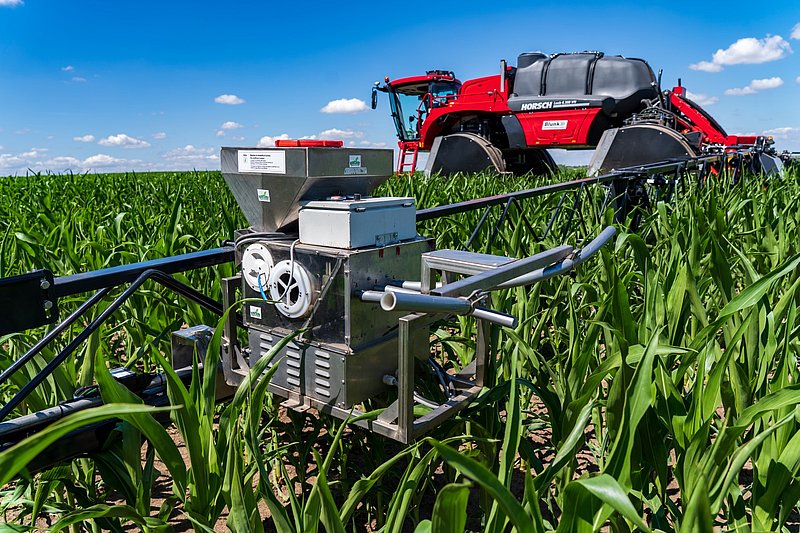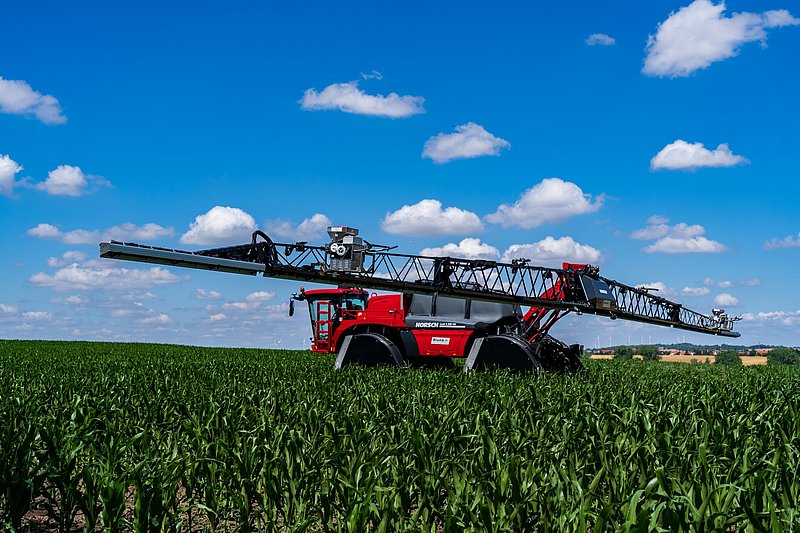Ichneumon wasps to fight the corn borer
The corn borer and its larvae are a big problem in German maize populations. It causes boreholes, bent plants and even damages at the maize cobs. There are different possibilities to fight it, e.g. chemical and mechanical methods. But there also is a new biological treatment. Read more about in the follow article.

Because of the climatic changes the corn borer continues to spread also in Germany. Every year its caterpillars and larvae do considerable damage to the maize population. The maize stalks break, and the results are a disturbed water and nutrient supply of the plant and potential infection spots for bacteria and fungal diseases. This may partly lead to harvest and also to quality losses.
But there also is an efficient biological means to fight the corn borer: trichogramma brassicae – ichneumon wasps with a size of approx. 1 mm. The female ichneumon wasps lay their eggs into the eggs of the corn borer. Thus, new ichneumon wasps instead of borer larvae develop in the corn borer eggs.
The corn borer infestation mainly starts with the migration of the moths from the populations of the previous year – in June and July depending on the region. The females prefer to lay their eggs on the underside of the leaf. Approx. one or two weeks later the borer larvae eclose and start to spread in the population and to bore into the plants. In the course of vegetation, the caterpillars eat their way through the inside of the stem from top to bottom.
After the harvest, they mainly are at the base of the stalk and can overwinter in the maize stubbles that remain in the field

For Theo Leeb it is important to take a look at other alternatives beside the chemical and mechanical methods for crop care. For example, in Brazil, they already do research with different bacteria to reduce chemical substances. “Normally the corn borer is treated with a chemical insecticide. Another very good method to fight the corn borer is the efficient destruction of the maize stubbles – thus you take away the possibility to hibernate. Currently, we are also looking to the ichneumon wasp method – a biological method which is becoming more and more important today. In Southern Germany or Bavaria, the corn borer has not caused big problems so far. But there are, of course, regions and countries which are extremely affected. Among others in the West and the South of Europe. In Hungary for example a lot of maize is grown and over there the corn borer is a massive problem.“
Getting the ichneumon wasps into the maize populations
There are different ways and means to get the ichneumon wasps into the maize population. The most common method are little cellulose capsules which include the ichneumon wasp larvae. The diameter of the capsules is approx. 20 mm. The cellulose dissolves after the application for example due to humidity and the ichneumon wasps get into the maize population. “What is most important is to hit the right moment for the application so that the borer larvae can be destroyed by the ichneumon wasps. The crucial factors are the start of the migration and the time of the oviposition.” Moreover, another problem is how to apply the cellulose capsules with the larvae. “On option is that several people walk through the field and place one capsule every 10 meters. But this is an enormous effort. Who can afford it?! Another option would be to apply the capsules with a drone which is equipped with a container on the underside. It is controlled by GPS, flies over the field along a pre-planned route and also drops a capsule every 10 meters from the air. In Southern Germany this service has already been provided for quite some time. However, this method, too, quickly reaches its limits when it comes to area output as the working width of a drone is limited. Moreover, the initial effort to plant the flight route is quite high and this whole method is rather expensive.” As the corn borer treatment has to be carried out when the maize is about 2 meters high, an application method with a normal tractor is no alternative either. There were approaches to work with a light high-clearance tractor that has specially been developed for the application of the trichogramma capsules. But according to Theo Leeb, this was not exactly brilliant either.

Application with a crop care sprayer
But one possibility that opened up was the application of the cellulose capsules with a crop care sprayer. “Last year, the managing direct of the company Biocare approached me to discuss if there might be other ideas with regard to the application. Together with a partner Biocare already had developed a kind of capsule spreader. It is a box, size 50 x 50 cm, where a metering device is mounted at the bottom that spreads the capsules via tubes and compressed air.”
For test purposes several of these capsule spreaders were mounted on a HORSCH Leeb sprayer. “If a 36-meter boom is equipped with several of these capsule spreaders, the lateral distribution is better and efficiency is higher. Thus, the idea was born to use the sprayer not only to apply liquids but also solids – in our case the ichneumon wasp capsules. As they are very light, there are no weight problems during the application.” It is important to get the capsules into the field evenly and in a kind of chequerboard pattern.

“At the moment, we are attaching air distributors at the left and at the right side of the sprayer which cover 24 meters each. I.e. we can effectively cover a working width of 48 meters. Each of these distributors is equipped with three outlets and throws the capsules onto the field. We are still working on the optimum chequerboard pattern. We are carrying out tests in the field and are currently waiting for the results. Then we will also learn more about the efficiency factor of this method. Of course, I do not expect it to be the same as for chemical plant protection agents. But in my opinion, today it is indispensable to deal with alternatives. For who knows if we will not have to make some compromise or another in the future. If it works out, we are planning to develop our own capsule metering device. This is quite possible from a technical point of view – similar to our singe grain metering device.“
